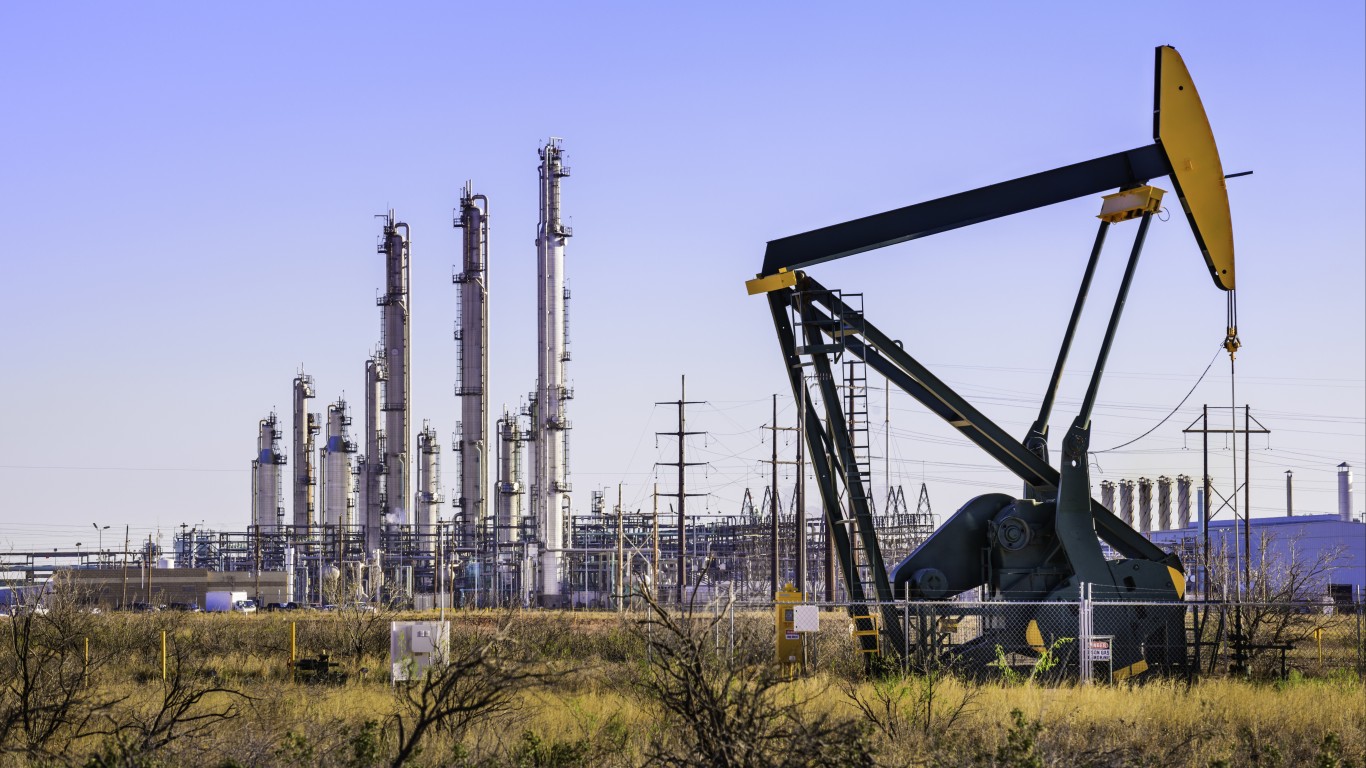Energy
What to Expect When Exxon Mobil and Chevron Report Q3 Results Friday

Published:
Last Updated:

Investors look to be steeling themselves against expected poor third-quarter results when Exxon Mobil Corp. (NYSE: XOM) and Chevron Corp. (NYSE: CVX) report results before markets open on Friday. There’s good reason for the gloom.
Earlier this week, BP PLC (NYSE: BP) reported third-quarter results that beat estimates set so low that investors reacted as if the company had snatched defeat from the jaws of victory. BP’s shares dropped by 4.3% on Tuesday when quarterly adjusted profit fell year over year by 41%. Shortly before markets closed in Europe, Royal Dutch Shell PLC (NYSE: RDS-A) traded down about 3.8% in Amsterdam, and the company’s American depositary shares traded down about 3.4% after posting a profit decline of 15% year over year in the third quarter.
Expectations for the two U.S. giants are not much better. Analysts are looking for Exxon to post earnings per share of $0.67 on revenues of $64.79 billion. The consensus estimates for Chevron call for EPS of $1.45 and revenues of $37.69 billion. In the third quarter of 2018, Exxon reported EPS of $1.46 and revenues of $76.61, while Chevron reported EPS of $2.11 and revenues of $43.99 billion.
Based on an Exxon share count of 4.23 billion outstanding, net income is expected to reach about $2.83 billion. That’s about 9.6% lower than reported net income for the second quarter and nearly 55% below net income of $6.24 billion in the third quarter of 2018.
Chevron’s net income outlook is not much better. Based on 1.9 billion shares outstanding, the company’s third-quarter net income should be around $2.76 billion. Sequentially that’s a drop of 36% from $4.31 billion and year over year net income falls 32% from $4.06 billion.
As of Wednesday’s close, Exxon stock has dropped by 15%, from $80.67 to $67.72 in the past 12 months. Chevron’s stock has risen from $111.65 to $116.36, an increase of just 3.7%. The S&P 500 has added about 12% in the same period and the Dow Jones industrials have added about 7.5%.
Over that same year, the price of Brent crude has fallen by about $13.50 a barrel and the West Texas Intermediate (WTI) price has dropped by nearly $10 a barrel. On top of lower prices for their most lucrative product, Exxon and Chevron continue to get hammered by projections of lower global economic growth through the remainder of this year and into next. Reports Thursday that China doubts that it can reach a trade agreement with Trump have pushed WTI prices down by about 2% and Brent prices down by about 0.5%.
The International Energy Agency (IEA) has forecast that demand growth for crude oil will be a million barrels a day at the end of this year, rising to 1.2 million barrels a day in 2020. That’s 100,000 barrels a day lower than IEA’s previous forecast and is virtually all due to a weaker global economy. Even one-off events like the attacks on Saudi Arabian processing facilities produce no more than a temporary price spike.
Just before noon Thursday, Exxon stock traded down about 0.3%, at $67.54 in a 52-week range of $64.65 to $83.75 and with a 12-month consensus price target of $79.14.
Chevron stock traded down about 0.1% to $116.20, in a 52-week range of $100.22 to $127.34. The stock’s price target is $137.46.
Thank you for reading! Have some feedback for us?
Contact the 24/7 Wall St. editorial team.